BAAS Bulletin No.94 Autumn/Winter 2023
ISSN 1751 – 7060
Formerly Bristol & Avon Archaeological Research Group
Registered Charity 221397
News from the Society
Ongoing Work by the Committee
James Lyttleton
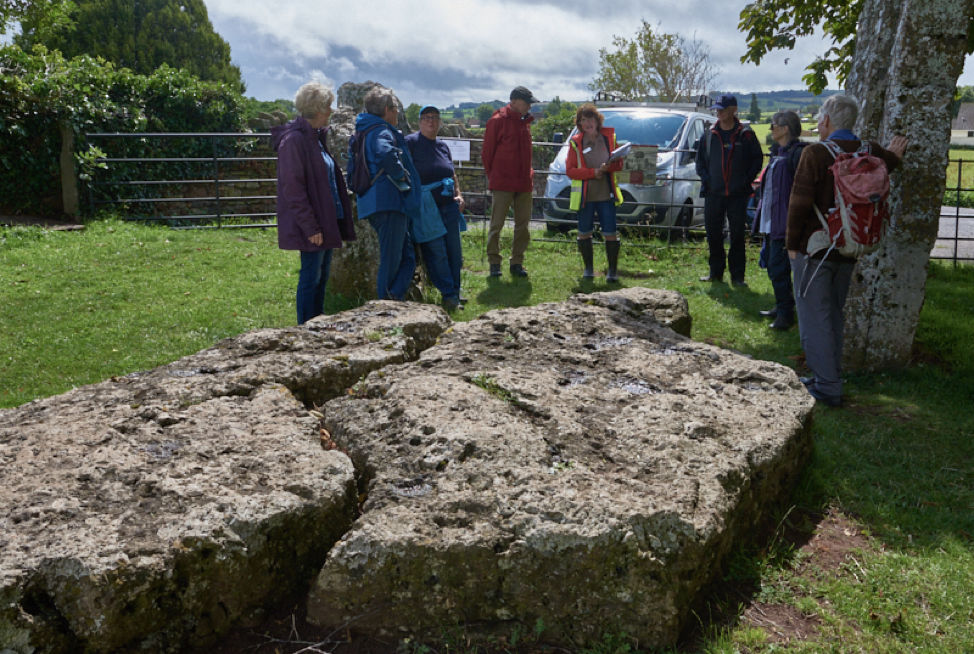
Members of the public being led on a tour of the Stanton Drew Circle as part of the Stukeley 300 Celebrations, July 2023 © Rick Buettner
Ongoing work by members of the BAAS Committee has included staffing stalls at the Stukeley 300 Tercentenary Celebrations in July and Bristol’s Brilliant Archaeology Event in September. A governance sub-committee comprising Julie, Steve and Kate has been working through all the policy and procedures needed to meet the requirements of the rewritten Constitution as agreed by the AGM 2023. Another sub- committee came up with suggestions for planning/booking lectures and walks/events. Steve, as Treasurer, is working through all the administrative paperwork required by the Charities Commission for BAAS to become a Charitable Incoprorated Organisation. Kate, as Secretary, is dealing with miscellaneous queries from the public regarding finds and objects on their land, as well as keeping committee paperwork in order and up to date (and being incredibly proactive and innovative). Another sub-committee comprising Julie, Kate, Steve, Keith and Donal is working on improvements to membership processes and improving recruitment and retention of members. Committee members have been writing and editing articles for the BAAS Bulletin, as well as writing and persuading others to write articles for the BAA Journal. Julie has been working on membership processes/admin, membership queries (new members, existing members, reminders to lapsed members and liaising with the Treasurer). Paula has been making sure that the website is updated. Donal is engaging with the community outreach in the Bristol area and further afield (see his article in this Bulletin on the Castle Dig in Great Torrington, Devon.
We are more than open to assistance with this workload – and we would be delighted to have more input from our membership. We have a number of vacant committee roles including bulletin editor, vice chair and committee members, and always welcome people coming forward. If anyone would like to find out more, please speak to any member of the committee or send us an email. If you would like to get involved but don’t want to be on the committtee, that would be great too! We need help running the talks on the night (helping with refreshments at lecture sessions, including washing up and putting away the chairs), marshalling the summer walks or anything else you would like to offer. We are also always keen to hear from the membership with feedback or ideas for future talks and walks, and at this year’s AGM we will be asking members if they would like to present a short talk on their research or archaeological interests.
BAAS Programme 2023
Keith Stenner
Talks usually take place on the second Wednesday of the month in the Apostle Room in Clifton Cathedral, Pembroke Road, Clifton, Bristol, BS8 3BX starting at 7.30pm and ending by 9.30pm. Tea, coffee and biscuits are available from 7.00pm. Ample free car parking is available in the Cathedral car park (entrance from Worcester Road off Pembroke Road). The No 8 bus service runs along parts of Pembroke Road. The entrance to the Apostle Room is on the same level as the car park, under the main part of the Cathedral. Non-members are welcome as guests at a charge of £2.00 per meeting. For those who have missed a talk or who may want to refresh their memory, summaries of previous talks given are available on the Society’s website.
Talk Late 2023
Thurs 14 December 2023:
Pitch Perfect: Excavating a Roman Framing Settlement and Villa at Dings Crusaders RFC.
Illustrated talk by Dr Andrew Pearson, Post Excavation Manager, Cotswold Archaeology, Cirencester
Between 2016 and 2018, Cotswold Archaeology carried out archaeological excavations of disused rugby pitches in Stoke Gifford. These revealed a previously unknown Roman site, which began as a simple enclosed farmstead that was probably established around the time of the Conquest. Over the following centuries the settlement developed in a series of phases, such that by its 4th-century peak the main building had evolved into a substantial winged villa. While the estate was affluent rather than palatial, the finds recovered from the site reveal widespread contact with the wider Roman Empire, reaching as far as the Mediterranean and perhaps Egypt. From its burials to rare artefacts, this unexpected site tells us much about Roman life in the Bristol region.
Stukeley300: A Review of the Tercentenary
Celebrations Over the Weekend of 22nd and 23rd July
Julie Bassett Hon Membership Secretary BAAS and Treasurer Stukeley 300.
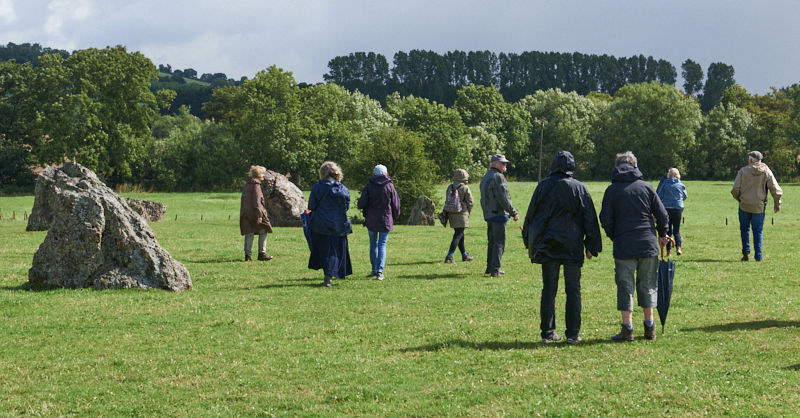
Figure 1 Tour of the stone circle at Stanton Drew, © Rick Buettner
The weekend of 22nd and 23rd July saw the culmination of three years of planning to celebrate the 300th anniversary of antiquarian William Stukeley’s visit to the Stanton Drew stone circles and the Cove. This celebratory weekend event, first proposed by BAAS member (and Chair of BACAS) John Richards, was aided and abetted by BAAS committee members: Julie Bassett, Kate Iles and Keith Stenner. The events held were aimed at the academic community, local community, visitors (both local and from much further afield) and children. The weekend was a massive success and the local community is still talking excitedly about the events and the legacy.
Stanton Drew is the site of the most important stone circles in England, after Stonehenge and Avebury. There are three circles, of which the Great Circle is second only to Avebury in size, and a cove of three stones in the village. William Stukeley was the leading antiquarian of the eighteenth century, and the first to perform a rigorous study of Avebury and Stonehenge. He visited Stanton Drew just once, on the 23rd of July 1723, but in that short time he produced a detailed plan, made several accurate drawings, and wrote an account that was to bring Stanton Drew to national prominence (Richards, 2023).
Planning this special event started three years ago when a scoping exercise took place identifying the wish for an academic symposium to be held on Saturday 22nd and a day of guided tours and family-orientated activities on the actual tercentenary of Sunday 23rd July 2023. From the start, the committee constituted to plan and manage the Stukeley300 weekend was keen that the event should celebrate Stukeley the man, alongside the stone circles. Stakeholders were identified and included the Parish Council, the landowners, English Heritage (the custodians of the stones), the Village Hall committee and staff, the local Rotary Club, the village Community Café, the parish church and Pensford, Publow and the Stantons Community Trust as well as local archaeological societies. There were many other players – too numerous to mention in this article – and their voluntary contributions were amazing and helped make this massive project a success.
Tickets for the Saturday academic symposium were sold through Eventbrite and quickly sold out. Numbers were limited by the capacity of the small Village Hall and ticket holders came from all over the country. The lectures, more of which later, were interesting and thought provoking. Refreshments were provided throughout the day and included, for those who pre-ordered, hot food from the nearby Druid’s Arms pub and ploughman’s lunches. At the end of the symposium, ticket holders were offered the opportunity to have a guided tour of the stone circles which, for some visitors, was their first sight of the stones they had heard so much about.
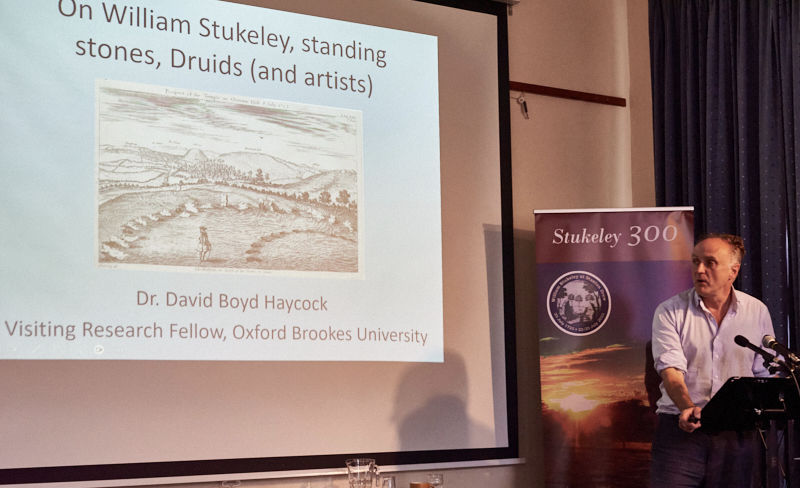
Figure 2 Dr David Boyd Hancock from Oxford Brookes University © Rick Buettner
Eminent speakers offered their services:
John Richards, Chair of BACAS and Secretary of Stukeley 300 opened the symposium explaining why William Stukeley actually came to Stanton Drew. This was a perfect scene-setting talk and made sense of the importance of the tercentenary celebrations. How Stukeley managed to record such details as appear in his images, on just one day, is open to debate and has prompted much speculation.
Dr Jodie Lewis, School of Archaeological and Forensic Sciences, University of Bradford spoke about Stanton Drew in its local context. Stanton Drew is a fascinating and important site, with much to contribute to our understanding of Neolithic Britain. Yet, contrary to popular belief, it does not exist in local isolation. In particular, the nearby Mendip Hills (one of the purported sources of stone used at Stanton Drew) are known to house a range of broadly contemporary sites and monuments. In this talk Dr Lewis considered the Neolithic archaeology of this region and presented the results from some of her recent excavations, which have uncovered a range of new monuments. This work is transforming our understanding of Neolithic activity in the region, providing an insight into different forms of ceremonial architecture and the links between people, places and practices in the landscapes local to Stanton Drew (Richards, 2023).
From Gatepost to Post Circles. Dr Neil Linford, Senior Geophysicist, Geophysics Team, Historic England. The first geophysical survey conducted by English Heritage (now Historic England) at Stanton Drew in 1997 was carried out in advance of proposals for minor invasive works at the site. This fluxgate magnetometer survey revealed a pattern of concentric rings of post-holes within the Great Circle, that was later verified through a more targeted hand-held caesium magnetometer survey, and subsequent investigation using a range of techniques. Dr Linford’s talk reviewed all the geophysical surveys conducted by Historic England to date, including the most recent extensive coverage of the site with a high-sensitivity vehicle-towed caesium magnetometer array and high sample density Ground Penetrating Radar (GPR) (Richards, 2023).
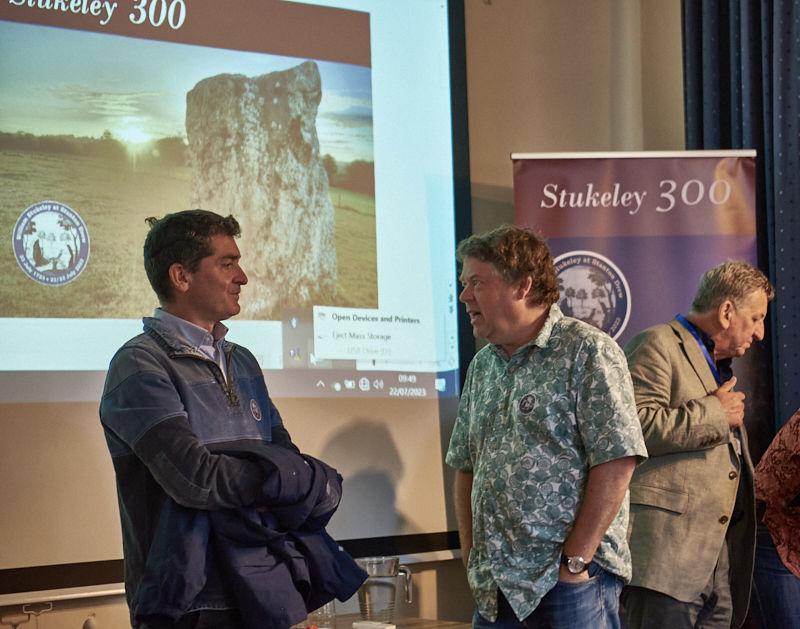
Figure 3 Speakers at the event, from left to right: Dr Neil Linford, Professor Josh Pollard and John Richards © Rick Buettner
Connections and Complexes: Stanton Drew in its wider British and Irish context. Dr Susan Greaney, Lecturer in Archaeology, University of Exeter.
The stone and timber circles and cove at Stanton Drew are unique, although they fit within a broader repertoire of monuments being constructed across Britain and Ireland in the late Neolithic period. This talk deconstructed the various components of the complex at Stanton Drew, drawing parallels and similarities between each element and monumental constructions elsewhere, to map the wide connections that Stanton Drew has with other places. The implications of this for the community that built and used Stanton Drew was drawn out: long-distance connections, similar religious and ritual practices, and a shared way of being in the world (Richards, 2023).
A Settlement in Stone? Professor Josh Pollard, Archaeology, University of Southampton.
Even though much remains to be known about the chronology and physical character of the monument complex at Stanton Drew, it is still legitimate to ask how it might have come into being and taken the form that it did. Analogy with similar and more extensively excavated Late Neolithic monument complexes, from Orkney to Wessex, offered insight, not least through the process by which major communal buildings set within settlements were frequently marked and monumentalised. There is reason to believe the sequence at Stanton Drew ran from settlement to stone with key features becoming foci for ancestral veneration (Richards, 2023).
On William Stukeley, Standing Stones and Druids. Dr David Boyd Haycock, Writer, curator and lecturer.
Dr William Stukeley, FRS, FSA (1687-1765) was the leading British antiquary of the early eighteenth century, famed for his detailed studies of Avebury, Stonehenge and other stone circles and monuments such as the one at Stanton Drew. Dr David Boyd Haycock wrote his doctoral thesis on Stukeley, and his ‘intellectual’ biography of the great antiquary was published in 2002. During this talk he offered an introduction to Stukeley’s life, work and ideas, and his theories on standing stones. He also mentioned the twentieth-century artist Paul Nash who was also inspired by Stukeley’s work (Richards, 2023).
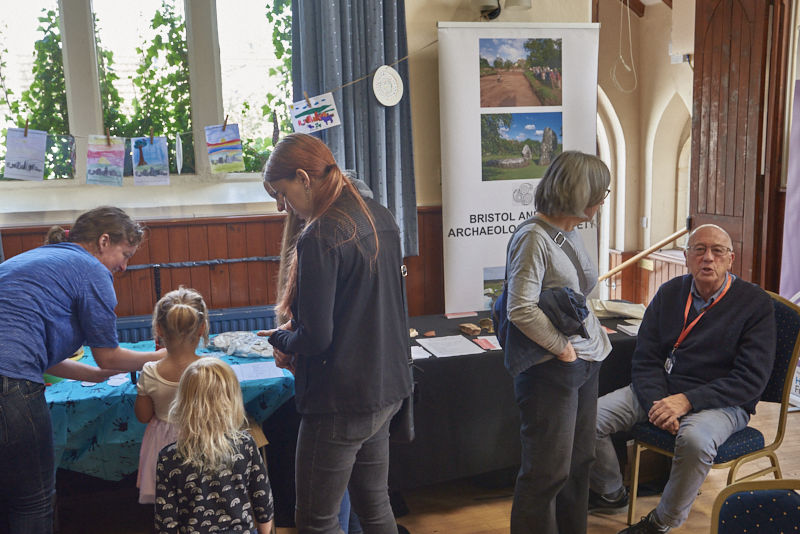
Figure 4 Kate Iles (far left) manning the stall for the Bristol Museum and Keith Stenner representing BAAS (far right) © Rick Buettner
Sunday, 23rd July was a day of mixed activities. The main attraction was guided tours of the stone circles and cove. To achieve this a number of volunteers were recruited by English Heritage and training was provided by Nick Hanks (ex BAAS member) and John Richards. Volunteer guides included BAAS and BACAS members plus a number from the local community. The 15 tours, including private ones for BAAS, BACAS and the Young Archaeologists Club (YAC) were offered free of charge via Eventbrite (with requests for voluntary donations on the day) and the 225 spaces were very quickly booked up. Luckily, on the day itself a number of people didn’t show up which meant spaces could be offered to those who either just turned up on the day or hadn’t been successful in booking a slot. We certainly involved more visitors than the 225 planned, the guides did an amazing job at engaging the visitors and feedback was very positive. Some of the people attending the previous day’s symposium stayed overnight for the Sunday events and we had visitors from as far as France and Byron Bay (the eastern coast of Australia).
To complement the guided tours, Nick Hanks offered two informal talks on the stone circles and a wonderful exhibition of text and images was put together by Henry Lowe (BACAS), aided by Kate Iles of Bristol Museum and BAAS, and John Richards. The exhibition boards were displayed in the Village Hall and most visitors managed to squeeze through the throng to view them.

Figure 5 Liz Anderson (left) talking with visitors in the Village Hall © Rick Buettner
Throng! Yes, there was a throng in the Village Hall and a wonderfully lively, buzzy atmosphere as visitors browsed the stalls and ate cake and bacon butties provided by the local Community Café. Bath & North East Heritage Services staffed two stalls; one for children to make stone circle cupcakes and one with a hands-on display of local prehistoric finds. YAC offered activities for all children and included making stone circle dream catchers and a colouring competition to boost the entries submitted by the village primary school children. Thanks go to Kate Iles and her colleague for managing the YAC stalls as that enabled parents to look at the other stalls and the exhibition displays. Helen and Mark Elliot offered for sale a range of small household items decorated with beautiful photographs of Stanton Drew landmarks. Mark Hayward offered for sale a range of his evocative photographs of the stone circles and wider landscape. Both of these stalls were very popular on symposium day too as visitors wanted souvenirs of their visit to this intriguing village. The remaining stalls were provided by our local archaeological societies (BAAS, BACAS and BGAS) offering membership information, finds handling etc. Thanks go to committee members Steve Hastings, Keith Stenner and James Lyttleton for “manning” the BAAS stall. BACAS had a very engaging and busy stall staffed by committee and general members. Which is a reminder! If any of the BAAS members would like to become involved in BAAS activities by volunteering to help on a stall at various open days, please let Kate Iles know. Your help would be most welcome and BAAS is very keen to involve members more widely.
Reading the above, one would assume that was enough for one small group, Stukeley300, to manage, but no. At the last moment, local bellringers, Shirley and Pete, offered the opportunity to take small groups of visitors up the bell tower to the ringing platform. In years gone by this would have provided almost bird’s eye views of the stone circles but unfortunately the trees have grown taller and obscured the view. However, even before the bell tower tour was suggested, local photographer and drone pilot, Matt Elliot, offered to make an aerial film of the landscape, stone circles and the cove. Such an opportunity was approved by English Heritage and a licence for filming was purchased. The resulting 20-minute film is stunning and was shown over the lunch break on symposium day and on a continuous loop in the Village Hall throughout the actual tercentenary. Even to those that know the stones well, this was a remarkable view which gave a completely different perspective. Stukeley would have been impressed.
It was such a momentous weekend and even reading this text back brings a lump to the author’s throat and an appreciation of being part of something special. Stukeley300 would like to think that William Stukeley would have approved of the way his tercentenary was celebrated and engaged with by so many different groups of people. The event has also provided a legacy, which is something the organisers were very keen to achieve. Not only did Stukeley300 break even financially – such a relief – but it also generated a surplus and donations were made to several local good causes. In addition, the Community Café sales and the bell-ringing tours generated funds for the church tower appeal. The nine voluntary guides, obtained via Stukeley300 publicity and trained by Nick and John, are able to offer their services to English Heritage in the future. The success of the guided tours over the Stukeley weekend prompted English Heritage to offer another two days of free guided tours over the Heritage Open Day weekend of 10th/11th September. A little bird from English Heritage said that it has inspired them to offer guided tours at other free sites in future. The well-crafted and informative exhibition boards have been donated by Stukeley300 to the village of Stanton Drew in the hope that they can be used again and again over the years. Matt Elliot’s spectacular drone film of the landscape and stones is to be edited down and offered to English Heritage to display on their website.
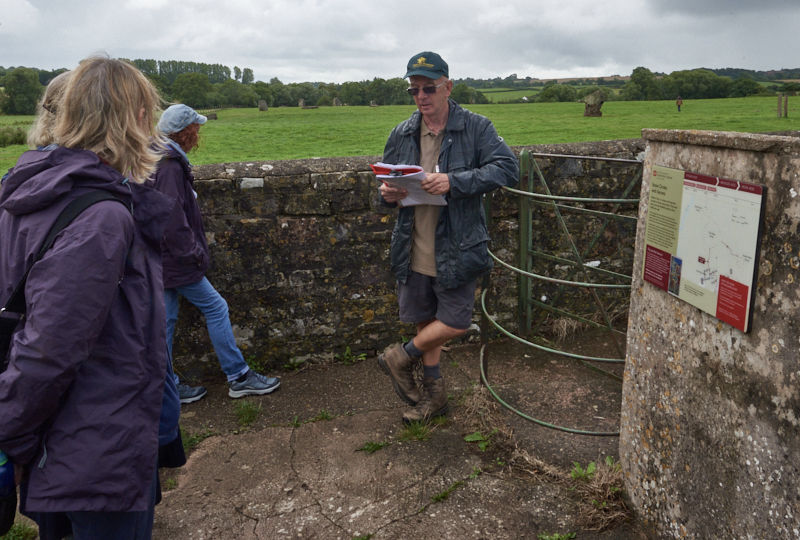
Figure 6 Robin Code taking a tour © Rick Buettner
This narrative of the weekend’s celebratory events wouldn’t be complete without mentioning the help, inspiration and insider knowledge provided by Liz Richardson. At the time of first planning this event Liz was Chair of the Parish Council. There was nothing about the village or its community that she didn’t know. From getting the grass cut in the overflow car park field, to finding display boards in the church on which to display the exhibition (and finding a friendly farmer with a tractor to move them), to encouraging the community to get involved with the celebrations, there was no aspect of this event that Liz wasn’t involved in.
The tercentenary day started out very stormy and Stukeley300 was anxious that all the plans would be wasted as people wouldn’t bother to visit the village. There was no need to catastrophise as the sun came out, there was no flooding, there was a steady flow of traffic that didn’t get jammed on the medieval bridge. The car park, although always full, never needed the overflow area. The Druid’s Arms had a good turnover of people popping in for a drink or a meal and it felt good that at the end of the day there was a group of stone lovers drinking in the pub garden, in the mellow evening sun and overlooked by The Cove. Yes, Stukeley would have been pleased.
Comments from attendees:
“What a great day – huge congratulations to all involved. It gripped three generations of our family!”
“I had a great time today at the Stukeley300 celebrations, so thank you for everything you’ve done.”
“Marvellous tour – really enjoyed it.”
“Such a treat to hear from a wide variety of knowledgeable and engaging speakers.”
“High class speakers … on a well-run and fully attended day. Made this prehistorian’s Saturday pass in a flash.”
“I’ve lived here for 45 years, and never have known so much about the stones.”
“Certainly was fabulous team work xx.”
“I just wanted to say how much I enjoyed my visit to Stanton Drew yesterday. I came for a one-hour tour of the stones and ended up staying the whole afternoon.”
BIBLIOGRAPHY
Richards, J. 2023. Event website: www.stukeley300.org.uk

Figure 7: Drawing from William Stukeley, Itinerarium curiosum, Vol. 2 (London, 1776).
P.S. Stukeley’s 300th anniversary is also being celebrated at Avebury, where the National Trust is mounting an exhibition of his drawings. That exhibition runs from 24 June to 10 November.
North Somerset update
Cat Lodge (Principal Archaeologist)
The Heritage and Design Somerset readers may already be aware, but I recently left my position as Principal Archaeologist at North Somerset Council. However, I’ve moved onto an exciting new chapter in my career, taking up a new position as Archaeologist with the National Trust and luckily able to stay in the area. I would like to take this opportunity to reflect on some of the interesting and exciting projects I’ve been fortunate enough to lead on or engage with in my 7 years as NSC’s archaeologist, but also to thank the incredible commercial and community archaeologists who have made my time here so incredibly rewarding.
Heritage Forum; My colleague Kate (Principal Conservation & Heritage Officer) and I set up the North Somerset Heritage Forum in 2017 as a way to better engage with community groups with an interest in the history and archaeology of North Somerset. Nearly 50 local groups and societies have signed up to be members of this Forum since then and the meetings have become a really exciting date in the calendar! Groups have shared their own skills and knowledge with each other and have collaborated on a range of research projects, and I hope it continues to go from strength to strength. If you’re interested in joining one of the local groups in North Somerset, head to Heritage Forum for more information.
Worlebury Camp; After being placed on Historic England’s Heritage at Risk Register in 2016, momentum quickly grew at North Somerset Council and with members of the Worlebury Hillfort Group to implement a management plan for the site and better reveal its secrets.
Significant amounts of work have been undertaken by the Worlebury Hillfort Group volunteers in clearing vegetation which has dramatically changed what can be seen of the hillfort’s impressive stone ramparts. The ‘glade’ area created by NSC c.15 years ago has been managed through cutting and raking and a wide range of flora and fauna are being recorded each year. The aim is to restore as much of the once natural, and rare, limestone grassland across as much of the hillfort as possible.
In the last year, ash trees displaying evidence of dieback have been felled by NSC close to the public right of way and in some of the more archaeologically sensitive areas. This has opened up lost views into and across the hillfort itself, but also has created viewpoints out across the surrounding landscape and over Weston-super-Mare.
A further application to the National Heritage Lottery Fund to bring the rest of the project to fruition will come forward in the next 12 months or so. More information on the project can be found at: www.n-somerset.gov.uk/hillfort
Development management/planning archaeology: I’ve reviewed thousands of planning applications over the last 7 years, ranging from someone wishing to erect a new porch on their medieval cottage to a new housing development with over 1200 homes and large infrastructure projects such as Banwell Bypass and Hinkley Point Connection C Project.
There have been some incredible discoveries, such as the Iron Age/Romano-British trackway and post-Roman cemetery at Yatton, a possible Roman trading post at Bleadon, the Roman roadside settlement near Banwell through the Hinkley project, and a plethora of other sites which have all contributed to our understanding of how this landscape was utilised over millennia.
There have also been instances where NSC has refused planning applications on the grounds of harm from development to important archaeological and historic sites, and I acted as an expert witness earlier this year during a planning inquiry on a scheduled monument (Gatcombe Roman town). I’m very pleased to say that the Planning Inspector agreed with our case and decided to uphold the decision not to allow development to take place. The Inspector’s decision can be found here: https://acp.planninginspectorate.gov.uk/ViewDocument.aspx?fileid=53802924
North Somerset Historic Environment Record (NSHER): The NSHER has undergone quite considerable enhancement in the last 7 years, starting with an audit undertaken by Historic England in 2016/17. This identified some key areas for improvement and work started straight away on implementing new policies and procedures to ensure a better service for our customers.
We’ve added huge numbers of new records to the database and enhanced even more existing records through projects such as the North Mendip Hills NMP, NRHE to HER and Great Weston Heritage Action Zone, as well as adding additional information from key sources such as the Bristol & Avon Archaeological Society Journal!
In 2022 we took part in another Historic England audit and I’m very pleased to say they were very impressed with the work we’ve done so far to improve the service and there is now a new 5-year plan in place, with a few key enhancement tasks.
Ewan, NSC’s Historic Environment Assistant who joined us in November 2022, is making even more progress in reducing the backlog of reports and other reference material, and looking at data sharing opportunities with neighbouring HERs and security of the database, etc.
Festival of Archaeology: The Council for British Archaeology’s Festival of Archaeology theme this year was ‘Archaeology and Creativity’ and ran between 15th and 30th July. A free in-person event was organised collaboratively between NSC heritage officers and Weston Museum on Saturday 29th July at Weston Museum where over 200 people came along to join in the fun.
We showcased a range of activities and information based around the Festival’s theme, from making your own Roman mosaic or Iron Age roundhouse to designing a stained-glass window. In addition, throughout July, information from Know Your Place (KYP) was shared on the social media accounts and reached over 170,000 people.
Know Your Place North Somerset: Since North Somerset joined the KYP family in 2017 we’ve been engaged in a range of projects to better showcase it in the local community and encourage people to use it for local research and general interest and have worked with a great group of volunteers through Weston Museum.
In 2020, when we weren’t able to go out into the community and share this great resource, we set up social media accounts to disseminate information that had been added to the Community Layer and also from the North Somerset Historic Environment Record. This has resulted in us reaching over 2 million people, all around the world, and created opportunities for people to engage and share their own memories and images of what they feel is important to them in terms of local history and heritage. There are monthly themes, and we’ve even had students whom we host for work experience creating posts over the last couple of years.
I’m really proud of the work we’ve done in North Somerset over the last few years. Heritage is being taken seriously, not only by senior colleagues and Councillors at North Somerset Council, but within local communities and we’re seeing better engagement and consideration of the historic environment.
The contact details for the heritage team at North Somerset Council remain the same – [email protected]
Dig the Castle Project, Great Torrington
Donal Lucey Projects Officer BAAS
Project Team Great Torrington Futures Group
Archaeologists Engage Co-Founder – Emily Wapshott BA(Hons); MA; PG. Dip; MSc; MCIfA/Project Lead
Great Torrington and the Castle
This hilltop has been settled for thousands of years but it is first recorded as a town in Saxon times. Not long after the Norman invasion, a motte-and-bailey castle was constructed on top of the most defensible part of the Saxon town, making a powerful statement about control.
The castle was burnt down in the civil war known as the Anarchy in the 12th century. It was rebuilt and later pulled down by royal decree in the 13th century due to an early planning dispute. The castle, formerly of timber and earthen banks, was rebuilt once more in stone in the 14th century and survived until the Tudor period.
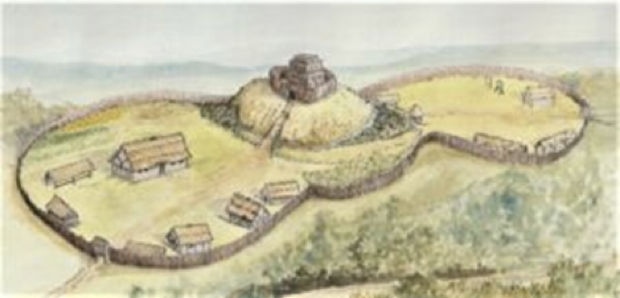
Figure 8: Reconstruction drawing of motte-and-bailey castle.
The ruined castle was briefly reused during English Civil War of the 1640s. The small surviving chapel on the site was reused as a school until the 1800s. The motte mound was included in the gardens of the adjacent grand house and the outer bailey to the east was reworked as pleasure grounds and later a bowling green. The inner bailey (the site of the current project) became an orchard, now the car park. The name Barley Grove is believed to represent a social memory of the castle and is a corruption of ‘Bailey’.
The town of Great Torrington has had a chequered interest in its castle over the years. It has been long known about from documentary sources, but with little acknowledgment of the existence of its surviving remains. Torrington Castle was the seat of one of Devon’s great Norman Baronies, so deserves to be put back on the map! With little information being available concerning its actual shape, size and layout, a project is underway which hopes to uncover much of the hidden heritage of the castle site, through a dig which has had its first season in September to October this year.
The motte mound and sections of the ramparts, on the edge of the town’s Commons, survived largely intact but unacknowledged until the mid-20th century, when the site was infilled and converted into a car park by the County Council. The recently available online images on the Historic England archive of aerial photography website have highlighted how much damage to the site has occurred since the 1930s. These images have created an urgency to investigate, understand and hopefully then protect the castle for the community moving forward. The site remains unprotected to this day and is not scheduled. Whilst it may no longer meet the strict criteria of designation as a scheduled monument, the excavation will help the local community to discover further information about the history of castle and town which will help with its future management.
This castle is also unique! It is the only one in Britain that sits on common land which is ‘owned’ by the people of the town (G.T Commons Conservators). All the other castles are claimed by heritage organisations, private individuals or councils. This has also meant that Torrington, once the seat of one of Devon’s great medieval Baronies, has often been excluded from studies on castles in the county.
Past Archaeological Investigations: Previously there have been a series of small commercially-led excavations in the proximity of the castle: for example, in 1987 when the pavilion was installed on the bowling green site, these excavations uncovered evidence of stone buildings, floor surfaces and pottery from the 12th to the 15th centuries. The shallow overburden of soil and good preservation of the archaeology found suggests promising opportunities may lie ahead for the community in exploring the wider site. The physical survey of the earthworks which surround the car park and the remnants of the motte mound, as well as GPS and LiDAR studies were undertaken March-August 2022 by Torrington Through Time (GT Futures Group and Archaeologists Engage).
Dig The Castle: A community archaeological excavation took place on the motte mound and inner bailey in September to October 2023. While we can’t talk in detail about the results just yet, we can say that we discovered some very interesting things indeed, including a possible medieval structure and some fragments of decorated floor medieval tiles! When the finds have been collated and recorded professionally, and the necessary reports written, we plan to have an open event in town to display some of the artefacts found and to make the report about the dig publicly available. This event may be some way away, so please keep an eye on our website and social media below. All of the information and material from the project will then be placed in the town’s Heritage Museum for all to view.
Most importantly, the community volunteers and the schoolchildren who participated had a fantastic time: they had agency in uncovering the hidden heritage of their town; they made new social connections; and they learned new skills about archaeology and heritage. At the link below, you can watch a report on the dig by ITV news:
Further information including videos and photographs can be found on the project website and social media:
https://www.onegreattorrington.uk/digthecastle/
https://instagram.com/archaeologistsengagedevon?igshid=MzRlODBiNWFlZA==
https://instagram.com/digthecastle?igshid=MzRlODBiNWFlZA==
https://www.facebook.com/ArchaeologistsEngage/
https://twitter.com/archsengage?lang=en
BAAS COMMITTEE 2023/2024
CHAIRMAN: James Lyttleton
SECRETARY: Kate Iles
MEMBERSHIP: Julie Bassett
TREASURER: Steve Hastings
PROGRAMME SECRETARY: Keith Stenner
WEBSITE CO-ORDINATOR: Paula Gardiner
EDITORS (BAA): Bruce Williams and Bev Knott (assistant editor)
PROJECTS OFFICER: Donal Lucey
BULLETIN EDITOR: James Lyttleton
COMMITTEE MEMBER: Mike Gwyther
COMMITTEE MEMBER: Bob Jones
CO-OPTED: Gundula Dorey, Peter Insole
Do keep an eye on the website and social media for event reviews and updates. If you have forgotten the Members’ password, please contact Julie Bassett at [email protected]. If you are not receiving email communications, but would like to, could you also contact Julie Bassett and give her your email address.
BAAS CONTACT POINTS
BAAS Website: www.bristolandavonarchaeology.org.uk
Twitter: www.twitter.com/BristolAvonArch
Facebook: www.facebook.com/baarchsoc
If you have any queries about BAAS events or activities, please contact the following:
Kate Iles (Hon. Secretary) [email protected]
Keith Stenner (Hon. Programme Secretary) 01275 541512 [email protected]
Paula Gardiner (Website Co-ordinator) 0117-4528734 [email protected]
Bulletin 95 is scheduled for January/February. If you would like to write anything for it or wish to highlight a subject you think should be in there, please contact bulletin editor James Lyttleton on [email protected]
